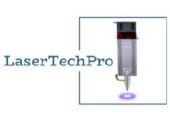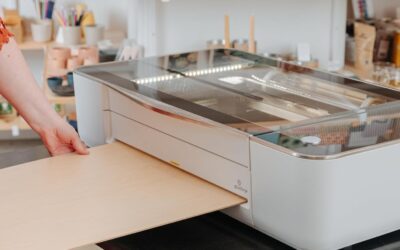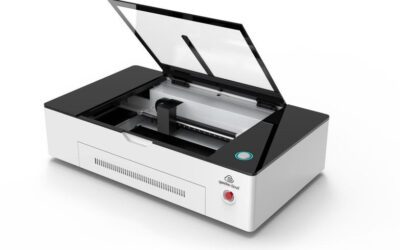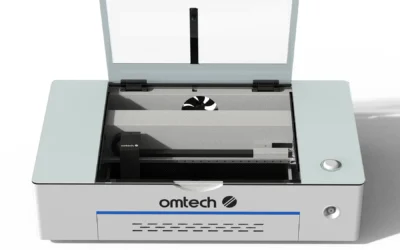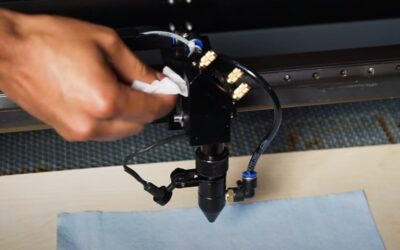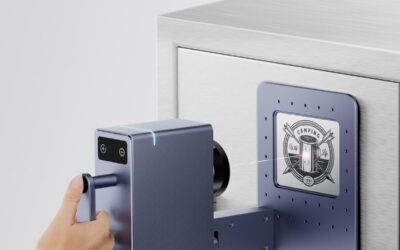CAN YOU LASER ENGRAVE ON LEATHER?
When it comes to utilizing a laser cutter and engraver, the realm of possibilities extends far beyond conventional materials like wood and acrylic. Venturing into the domain of engraving on leather presents an exciting yet daunting prospect for many. Whether it involves working with a UV Laser, Fiber Laser, or a CO2 Laser engraver, delving into leather laser engraving and cutting requires a solid foundation of knowledge and techniques.
Can you laser engrave on leather? Laser engraving is not only feasible but also offers a wide range of capabilities and possibilities. It allows for the creation of personalized and intricate designs, showcasing the allure and potential of leather engravings.
How Does Laser Engraving Leather Work?
Laser engraving on leather involves using a focused laser beam to etch designs, patterns, or text onto the surface of the leather. The process relies on the controlled burning or charring of the leather, resulting in precise and intricate engravings. The high heat of the laser vaporizes the surface, creating a contrast in color and texture to produce visually striking and permanent markings.
Understanding Leather Properties
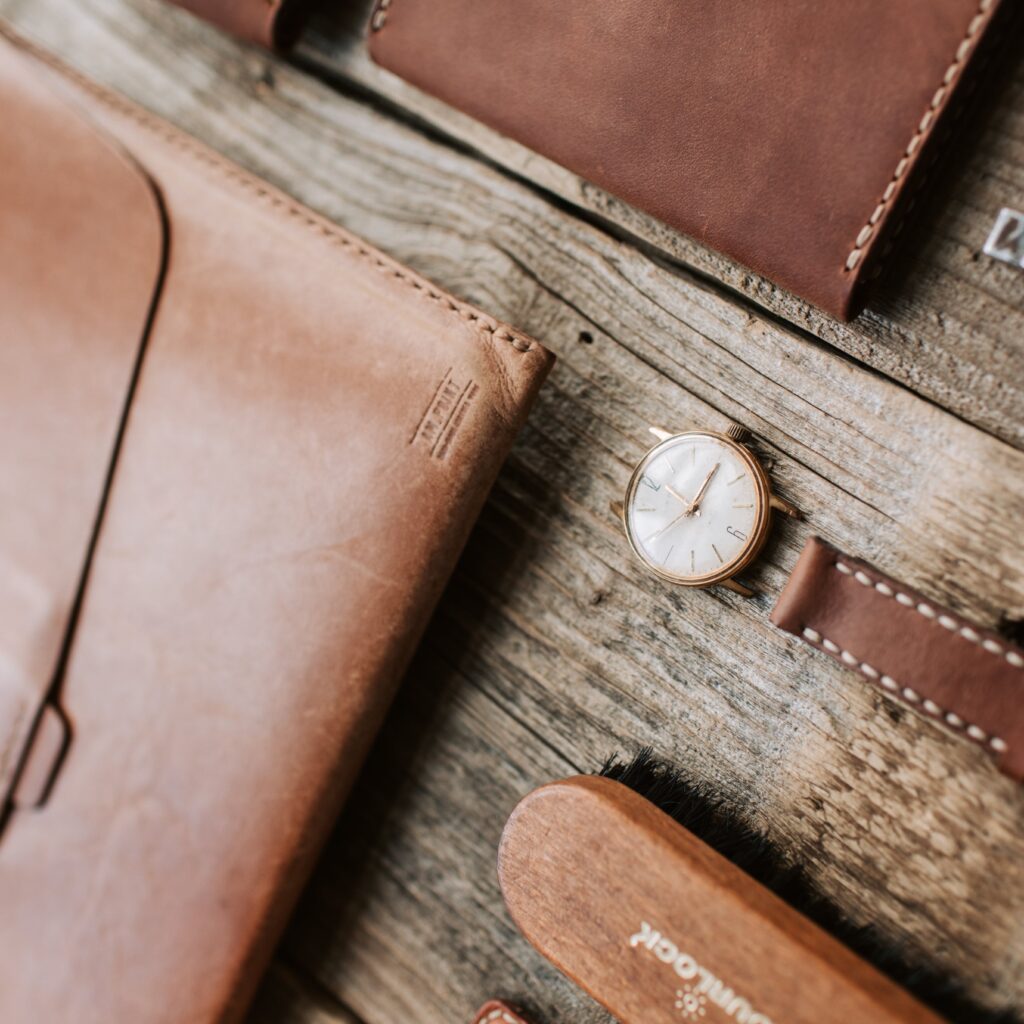

Leather, sourced from a variety of animal hides such as cattle, deer, sheep, and pigs, exhibits exceptional tensile strength, making it highly resistant to tearing or puncturing. In addition to its robustness, leather possesses remarkable elasticity, allowing it to stretch and retain its original shape. Furthermore, through tanning and surface finishing processes, leather becomes easy to clean and exhibits resistance to both water and fire.
Moreover, the diverse grains of leather, including full grain, top grain, corrected grain, and split, each offer unique textures and characteristics that can influence the engraving process. Additionally, the application of finishes such as aniline, semi-aniline, and pigmented further expands the range of options for engraving.
Types of Leather Suitable for Laser Engraving
When considering leather for laser engraving, it’s essential to opt for natural, untreated leather with consistent thickness and minimal surface treatments. Full-grain and top-grain leathers are popular choices due to their durability and ability to yield high-quality engravings. Avoid leathers with heavy surface finishes or synthetic coatings, as they may not produce optimal engraving results.
Common Types of Leather for Laser Engraving are Cowhide, lambskin, pigskin, deerskin, chamois, and suede are commonly used for laser engraving, while synthetic leather and eel leather are not recommended due to potential health hazards or strong odors.
Laser Engraving Applications and Ideas for Leather
Leather can be utilized for various applications including wallets, scrapbook covers, jewelry, patches, costumes, purses, belts, shoes, arts and crafts, and leather gear enhancements, offering limitless design and personalization opportunities.
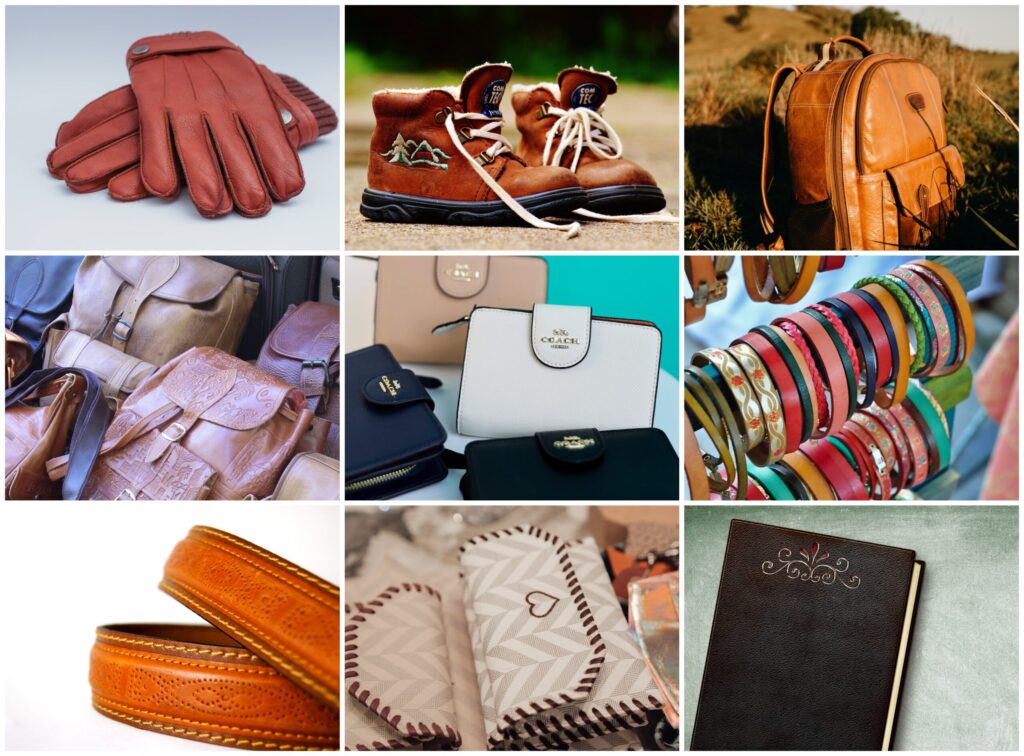

Selecting the Right Laser Engraver
To embark on your leather engraving journey, selecting the right laser engraver is paramount. Guiding readers in choosing a user-friendly laser engraver tailored to their needs is crucial to ensuring a seamless and enjoyable engraving experience.
How to Pick a Laser Engraver for Leather?
1. Power and Precision: Select a laser engraver with sufficient power and precision to achieve detailed and crisp engravings on leather.
2. User-Friendly Interface: Look for a laser engraver with an intuitive interface, making it easier for beginners to navigate and operate.
3. Compatibility: Ensure that the laser engraver is compatible with various sizes and types of leather, offering versatility in engraving capabilities.
4. Safety Features: Prioritize a laser engraver equipped with safety features to mitigate risks associated with laser operation.
5. Support and Resources: Opt for a brand or model that offers comprehensive customer support and readily available learning resources to aid in your engraving journey.
Best Leather Laser Engraver
The best type of laser for engraving leather is typically a CO2 laser. CO2 lasers are well-suited for engraving on leather due to their ability to produce high-quality engravings with precision and detail. These lasers work by emitting a concentrated beam of light that vaporizes the surface of the leather, creating intricate and visually striking designs. Additionally, CO2 lasers offer versatility in terms of power and speed settings, allowing for customization based on the specific characteristics of the leather being engraved. When selecting a CO2 laser for engraving leather, it’s important to consider factors such as power, precision, compatibility with different types of leather, and safety features to ensure optimal results and user safety.
CO2 LASER ENGRAVERS ANALYSIS
Tips for Laser Engraving Leather
1. Test on Scrap Leather: Before engraving your final piece, conduct test engravings on scrap leather to fine-tune settings and ensure the desired outcome.
2. Optimize Settings: Adjust laser power, speed, and frequency settings to achieve the ideal depth and contrast for your engravings.
3. Clean Surface: Ensure the leather surface is clean and free of any debris or oils that could interfere with the engraving process.
4. Consider Artwork and Design: Select designs and artwork that complement the characteristics of leather, taking into account the material’s texture and color for optimal visual impact.
5. Protect Surrounding Areas: Use masking tape or protective materials to shield surrounding areas of the leather from potential scorching or discoloration during engraving.
7. Keep These Things in Mind
- Leather’s low contrast and fibrous nature may require thicker, high-quality material for optimal engraving.
- Safety precautions to prevent flames and monitor odor should be observed, with the choice of a suitable laser type based on the specific engraving or cutting needs.
- Thick, good quality leather with the buffed side up is recommended for cutting, while deep engravings on thick leather work best, and UV lasers are suitable for marking and engraving on leather.
In conclusion, laser engraving on leather is not only achievable but also remarkably accessible, especially with the right approach and a user-friendly laser engraver. Embrace the joy of personalizing leather goods and immerse yourself in the art of laser engraving.
